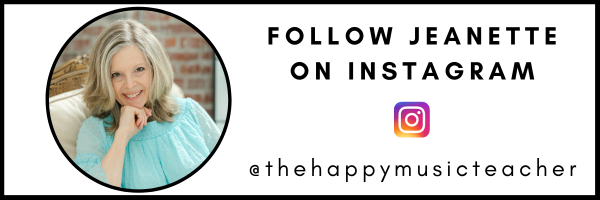TL;DR:
- Engage reluctant readers by integrating music into literacy instruction.
- Use body percussion and instruments to teach syllabication in a fun and interactive way.
- Access a video tutorial and free lesson plan to get started.
Can you relate?
We’ve all been there. You have a student (or five) in your class who are like “I HATE reading” . . . those reluctant readers who put up an immediate roadblock. We know that reading is THE most important skill students can learn because it’s literally the basis for everyday life. But for your struggling readers who are turned off by reading—who are too distracted or can’t focus, those kiddos who feel actual physical pain when reading, and those who have an extra challenge like a processing difficulty or dyslexia—it’s just one more chore; one more thing they can’t do. And nothing you’re going to do will convince them that they can read or that they should want to read.
So many struggling readers!
According to Scientific American, last year over two-thirds of students in the United States were struggling readers, and 40% were essentially nonreaders. And you know you’re doing all the things. There’s always a new strategy around the corner or a new way of teaching the same skills. But it seems that nothing is working for some of our kiddos who struggle.
How can arts integration help your reluctant readers?
That’s why you need to creatively bypass your reluctant readers’ barriers. One of the most effective ways to do this, especially for students who find reading challenging, is through arts integration—specifically by incorporating music.
Music and literacy are intrinsically linked. Music teachers use many of the same teaching words that reading teachers use: phrase, fluency, expression, rhythm, intonation, and the list goes on.
The difference is, music teachers have an advantage over classroom teachers because our students (essentially your students) consider our class fun. And that makes all the difference. We’re able to sneak literacy skills into our lessons organically, even for struggling readers.
Here’s the best part! You can also use music in your classroom to get beyond the roadblock for students who struggle with reading.
It’s easier than you think.
You don’t even have to know anything about music to use these strategies.
Today let’s focus on syllabication. As you already know (but let’s pretend you don’t for a moment), syllabication is breaking words into syllables. Struggling readers can benefit greatly from this technique, and music teachers do this all day long, every day! (You didn’t know that did you?) But we add a little something extra…body percussion and instrument play to engage our struggling readers.
Music Activities to Make Your Classroom ROCK
Body percussion is any part of your body that makes a sound. (Think clapping, patting your legs, snapping, etc.)
Instrument play means you’re going to choose an instrument for your students to play. (I know what you’re thinking: What if I don’t have any instruments? You can borrow from your music teacher!).
Now that you understand the powerful connection between music and literacy, let’s dive into a step-by-step guide to help you implement these strategies in your classroom for struggling readers.
Step-by-Step Guide to Helping Reluctant Readers
1. Introduce the Concept of Syllabication
- Explain syllabication to your students and why it’s important.
- Use simple examples to demonstrate breaking words into syllables.
2. Body Percussion Activities
- Teach students different body percussion sounds (clapping, patting, snapping, etc.).
- Practice breaking words into syllables using body percussion.
3. Incorporate Instruments
- Choose instruments for your students to play (borrow from your music teacher if needed).
- Practice syllabication with instruments, making it a fun and engaging activity.
4. Create a Rhythm Pattern
- Combine body percussion and instruments to create a rhythm pattern for syllabication.
- Encourage students to come up with their own rhythm patterns using words.
5. Reinforce with Visuals.
- Use flashcards or posters that respond to black lights to make the learning more visual and memorable.
- Incorporate these visuals into your syllabication activities.
From Reading Roadblocks to Reading Rockstars
To help you visualize and implement these strategies, I’ve created a detailed video tutorial. This video walks you through each step, providing tips and examples to make your lessons more effective and enjoyable, even for your reluctant readers.
Can’t wait to help your struggling readers be more engaged? Click the link below to access the video and your free lesson plan to start integrating music into your syllabication lessons today!
About Jeanette Mihalchik
Jeanette Mihalchik is a National Board Certified music teacher with over 25 years experience teaching general music. Jeanette is an Arts Integration Specialist, an instructional coach, and a National presenter. She has studied Arts Integration at The Kennedy Center through their CETA program and is a certified Orff Teacher. Jeanette is the podcaster of The Happy Music Teacher. She has presented at Arts Integration and Music Education Conferences all over the country. Jeanette is the author of resource books, Stories That Sing and Stories That Sing Too! ing Too!



